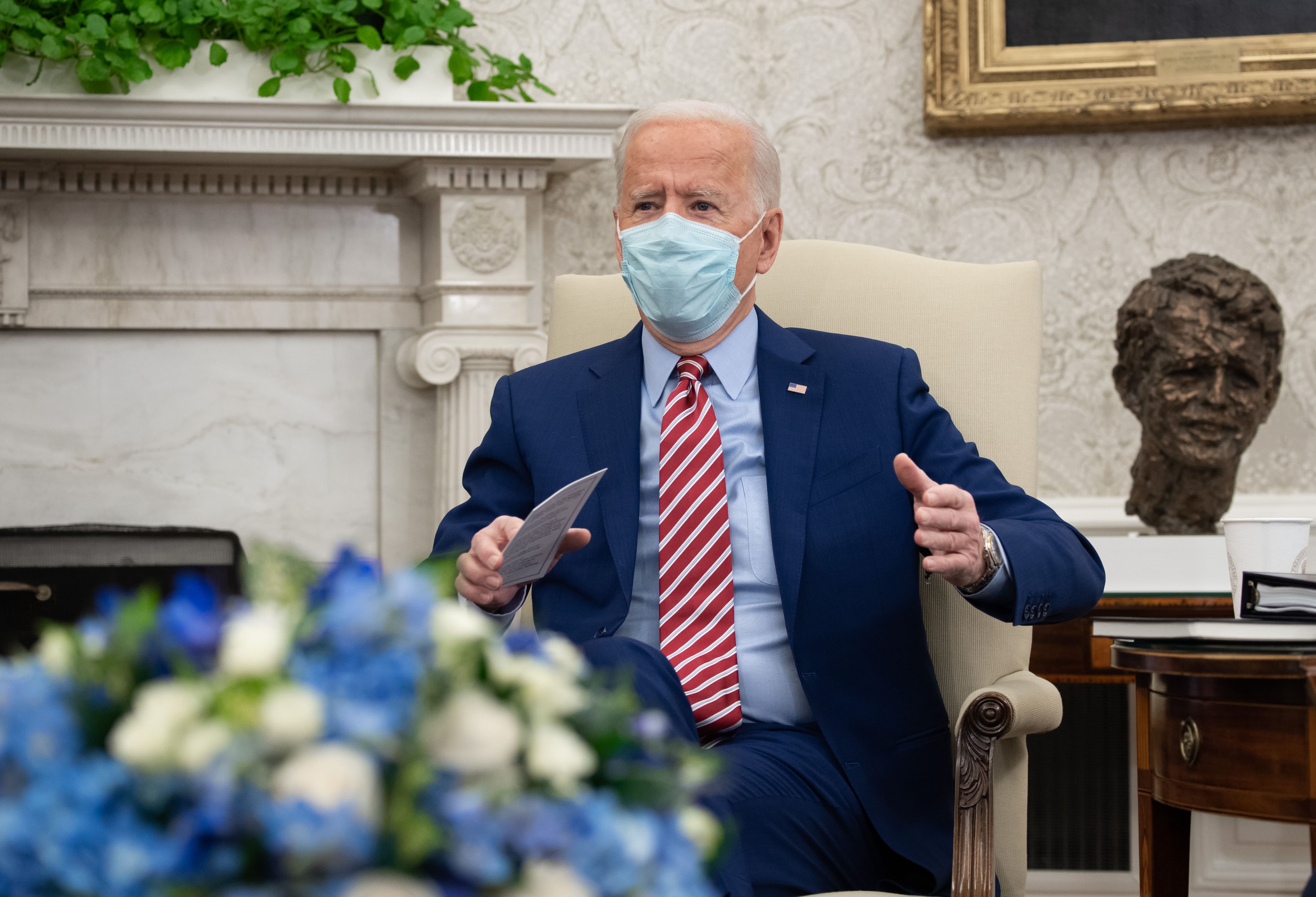President Joe Biden holds a meeting with US Senators about infrastructure improvements in the Oval Office of the White House in Washington, DC, February 11, 2021.
Saul Loeb | AFP | Getty Images
Covid-relief plan
Biden’s stimulus plan, currently being debated in Congress, calls for $1,400 in direct payments to most Americans and an increase in the child tax credit for one year.
Biden also wants to increase the per-week unemployment benefit to $400 and extend it through September. A draft proposal issued by House Democrats ends the benefits on Aug. 29.
The fate of a $15 minimum wage, in the president’s proposal, is unclear. The Senate left it out of their version. However, House Speaker Nancy Pelosi, D-Calif., said it will be in the House package, which will then be sent to the Senate.
Pelosi said she expects the House plan to be signed into law by the end of the month.
Looking long-term
FREDERIC J. BROWN | AFP | Getty Images
During the campaign, Biden made a number of promises to bring back jobs. Hamrick believes the president won’t waste time in addressing structural problems within the economy.
“He will move quickly knowing that the clock is ticking with respect to political opportunity,” he said.
Indeed, the president met with lawmakers in the Oval Office on Thursday to talk about an infrastructure package.
Warning that China is aggressively outpacing the U.S. on infrastructure, Biden said, “We just have to step up.”
Rebuilding the country’s roads and bridges, as well as electricity grids and universal broadband networks, will also mean new jobs. The same goes for the implementation of clean energy.
“We need a Rooseveltian public works plan in this country right now,” said Marc Morial, president and CEO of the National Urban League.
“American businesses will benefit from a strong infrastructure and stimulus program,” he said. “Most of the work that gets done in infrastructure gets done by the private sector, the people that make steel, concrete, lumber.”
The key is that the plan is targeted and that there be investments in Black and Brown communities, he said. It should include water systems, community centers, libraries and expanding broadband access. A percentage of the work should go to Black and Brown workers as well, he said.
“There has to be an explicit intentionality of what ends up in the [infrastructure] bill in order for these communities to be able to benefit,” Morial said.
He will move quickly knowing that the clock is ticking with respect to political opportunity.
Mark Hamrick
Bankrate senior economic analyst
